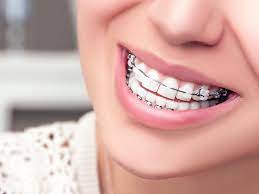
Your Guide To Metal Braces – Everything You Need To Know
Whether you are considering metal braces for yourself or a loved one, there are some things you should know. Having misaligned teeth can cause a host of problems, including chewing, breathing, and even infections. You may also experience chronic dental pain and excess plaque buildup. In addition, a smile that does not look its best can also contribute to mental health issues such as low self-confidence. Even mild misalignments can lead to gum disease, which in turn can cause high blood pressure, heart disease, diabetes, and even some types of cancer. Visit this site to know about metal braces cost in Abu Dhabi.
Traditional metal braces:
Traditional metal braces are designed to straighten teeth using small metal brackets cemented to teeth. Archwires are connected to the brackets and are available in different stiffness levels and sizes. These wires are held in place by colorful elastic ligatures. Each part of the brace has a unique role in the orthodontic treatment process. While they do not hurt, metal braces can cause some slight discomfort as your teeth adjust to the tightening of the brackets.
Damon/self-ligating braces:
The Damon/self-ligating braces system was designed to replace traditional metal braces with self-ligating braces. They are a comfortable alternative that does not require tooth extractions and palatal expanders. These braces are made of high-grade stainless steel, and the brackets are less visible. They also have removable positioning gauges that help ensure proper placement.
Ceramic-composite braces:
Ceramic braces are a popular alternative to metal braces. Made from translucent materials like ceramic, they are less noticeable than metal braces. They also use tooth-colored wires. These braces are perfect for adults who want to improve their smile but do not want the metal look.
The process of choosing ceramic braces starts with a consultation. During this visit, your orthodontist will ask you a series of questions about your oral health and dental goals. He or she will then recommend the best treatment plan for you. It’s important to be clear about your expectations for the treatment, as other options may be more effective in achieving your goals.
Invisalign:
Metal braces are a common solution for straightening teeth. The traditional wire version uses stainless steel brackets cemented onto the teeth, but other metals can be used. The wire is attached to the brackets with elastic ties. They are less noticeable than other braces, but they can make eating and speaking more difficult. They are also more expensive than other options, so you should consider this option carefully.